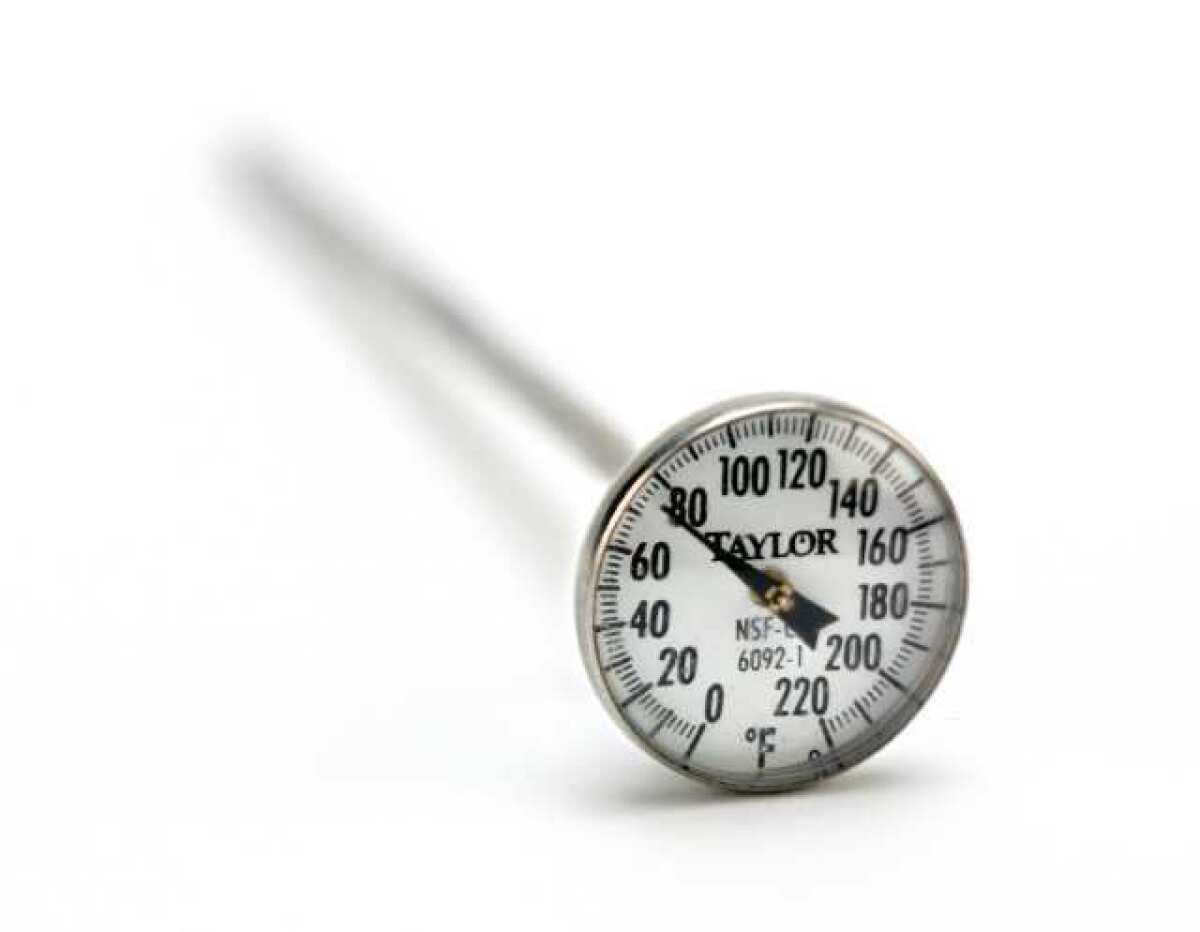Test Kitchen tips: Calibrating your thermometer

- Share via
Whether you use it to tell when a roast is done or to make sure that the frying oil heats to just the right temperature, a dial (instant-read) or digital thermometer eliminates part of the guesswork for the cook.
Indispensable as it may be, a thermometer is only as good as its accuracy. Calibration is key. Here are some quick tips to keep your thermometer on target:
For dial, or instant-read, thermometers:
- Calibrate the thermometer before it is first used, whenever it’s been dropped and once a month (especially if it’s stored in a drawer where it might get jostled).
- To calibrate using ice water, place the thermometer stem in a bowl or glass of ice water, careful that the sensor (the tiny dimple along the side) is completely submerged. Let it sit for a few minutes, then read the dial. It should register at about 32 degrees. If it doesn’t, use a wrench (or the stem case -- many have adjusters built in) to hold the hex screw behind the dial firmly, then twist the dial until it registers the proper temperature.
- To calibrate using boiling water, place the thermometer stem in a saucepan of boiling water, careful that the sensor (dimple) is completely submerged. Let it sit for a minute or so, then read the dial -- it should register at about 212 degrees. If not, use a wrench (or the stem case -- many have adjusters built in) to hold the hex screw behind the dial firmly, then twist the dial until it registers the proper temperature. Remember that the boiling point of water decreases as elevation increases (about 2 degrees for every 1,000 feet).
For digital thermometers:
- Test every six months or so (depending on frequency of use) to make sure that the thermometer works properly, using either the ice water or boiling water method.
- Many digital thermometers have reset buttons. If the accuracy is off, adjust the thermometer to the proper temperature using this button.
- Many digital thermometers have detachable probes attached by wire to the main body. These probes are relatively inexpensive to replace, and can be found at most cooking supply stores.
- Replace the batteries as needed.
If you have any kitchen tips or questions you’d like me to explore, leave a comment below or shoot me an e-mail at [email protected].
ALSO:
Go behind the scenes at the Test Kitchen
Browse hundreds of recipes from the L.A. Times Test Kitchen
You can find Noelle Carter on Facebook, Google+ and Twitter.
More to Read
Eat your way across L.A.
Get our weekly Tasting Notes newsletter for reviews, news and more.
You may occasionally receive promotional content from the Los Angeles Times.











